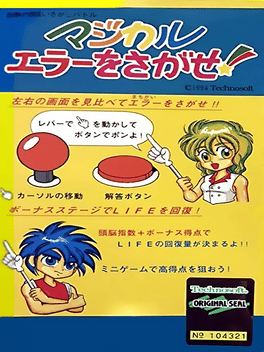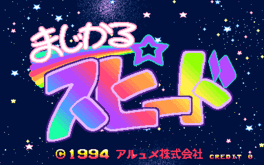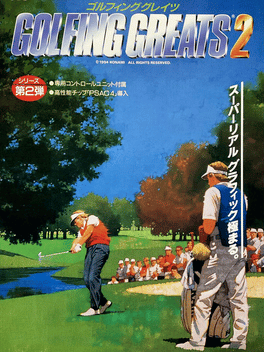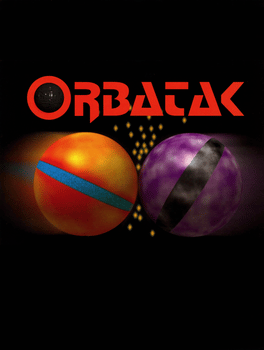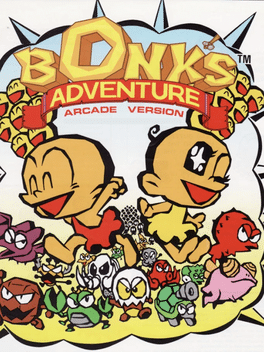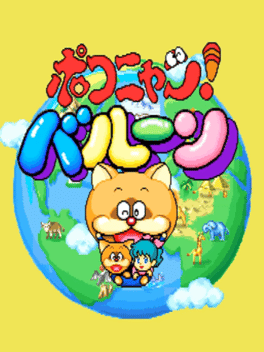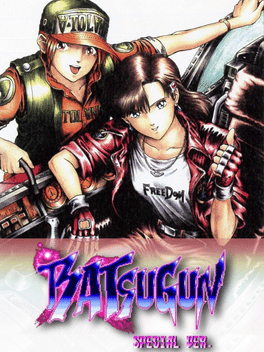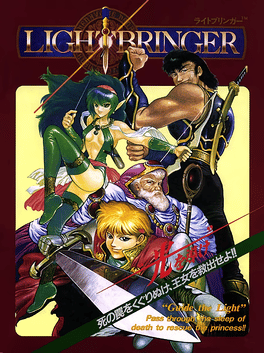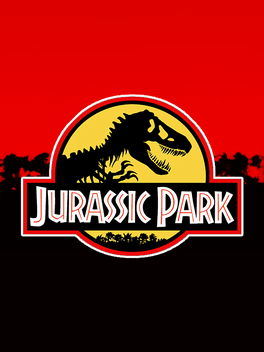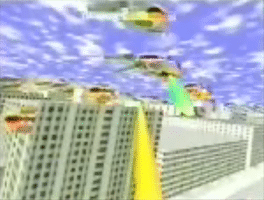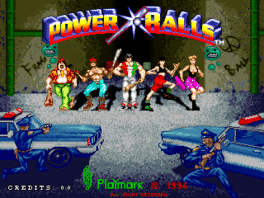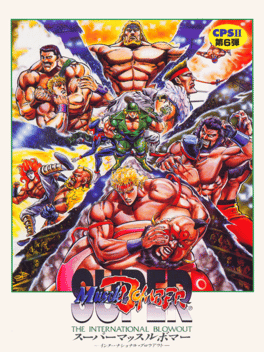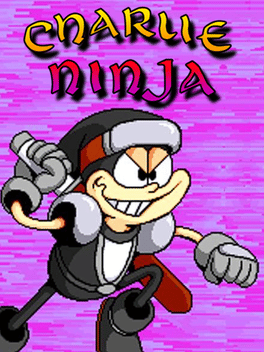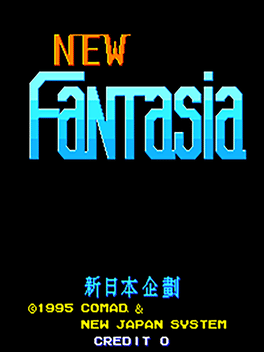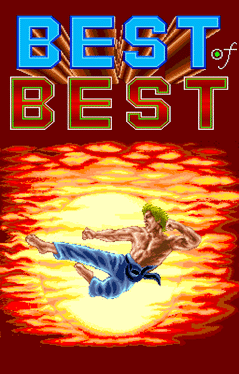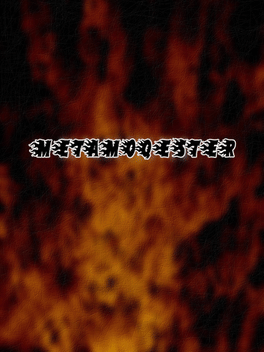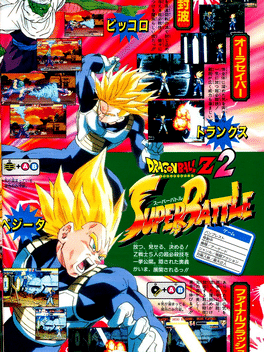New Arcade Games - Page 65
-
Magical Error wo Sagase
1994
Magical Error wo Sagase is a two-player game where players go through a series of two pictures (some of them animated and scrolling) to spot the difference within a limited time. While waiting time slowly drains the player's health, making mistakes costs even more health. In between the multiple stages, the player does a bonus stage which restores health depending on how many points are acquired. As the game progresses more differences must be spotted to win each stage. Some pictures are based on fairy tales and notable stories. -
Magical Speed
1994
-
Golfing Greats 2
1994
Golfing Greats 2
1994
Sequel to Golfing Greats, featuring similar gameplay and vastly improved graphics with 3D scrolling and panning. -
Orbatak
1994
-
Miss Bingo
1994
Miss Bingo
1994
Miss Bingo is a clone of Min's previous game "Miss Puzzle" with updated graphics and a split screen for optional two player play. The player must slide three or more matching tiles together in horizontal, vertical, or diagonal chains to clear them from the screen. When tiles are removed from the screen surrounding tiles drop and slide around to fill the gaps. Additional tiles are added to the screen over time and The objective is to clear a set number of chains before the tiles stack up and reach the dead line at the top of the play area. Once the set number of tiles are removed, the play area is cleared and the photographic nude background image is revealed. Clearing tiles advances a bar at the bottom of the screen. Once the bar is filled the game is interrupted by a bonus game. Once the bonus game is completed the game returns to the exact spot where it had left off. If any tiles cross the dead line then the game is over. Upon continuing, the game removes the bottom few rows of tiles from the board so that ga -
Naname de Magic!
1994
-
Bonk's Adventure: Arcade Version
1994
Developed by Kaneko and released in 1994, Bonk's Adventure: Arcade Version is based on the original Bonk games for the TurboGrafx-16 and PC Engine. However, the gameplay and level design are drastically different to suit arcade style play. -
Pokonyan! Balloon
1994
Pokonyan! Balloon
1994
It's a oddity running on CPS1 hardware, not really a game as such but more of a kid's ride, very similar in nature to things like the Waku Waku Sonic Patrol car. -
Batsugun: Special Version
1994
A second edition, titled Batsugun Special Version, was showcased to attendees at the 1994 AOU Show in Japan but it was never officially released in arcades, as Toaplan slid into bankruptcy and this special version appeared on the secondary video game collecting market after the company vanished. The special version featured a number of changes compared to the original version including a much smaller hitbox, a shield protecting the player from one hit, more powerful bombs, new scoring items, and the addition of multiple loops of increasing difficulty after completing the initial loop, among other changes. -
Lightbringer
1994
Lightbringer
1994
Light Bringer (ライトブリンガー) , also known as Dungeon Magic, is a 1994 arcade game by Taito Corporation Japan and is also included in Taito Legends 2. Unlike most medieval/fantasy beat 'em ups, it featured an isometric viewing angle, some platforming (usually involving players stacking rocks or crates to climb on and jump to treasure chests), unusually large stylised sprites, and variable blood/gore settings. Unusually, there are two European versions of the game: one uses the title Light Bringer, and the other uses the title Dungeon Magic. While this game uses the same title as Taito's earlier NES game Dungeon Magic: Sword of the Elements, the two games are unrelated aside from their titles. -
Jurassic Park
1994
Jurassic Park
1994
Jurassic Park is a rail shooter arcade game developed and released by Sega in 1994. It is based on the 1993 film of the same name. The game cabinet resembles the rear of the Ford Explorer tour vehicles used in the film. The player, equipped with a joystick, must shoot dinosaurs that appear on-screen throughout the game. The game is notable for having a moving seat, also used in Sega's previous 1991 light gun shooter Rail Chase. The seat is powered by hydraulic pistons to move the seat according to action on the screen. The game's graphics blend two-dimensional sprites and three-dimensional polygons to give the sense of movement. Jurassic Park was the first game of this genre to include 3D environments. -
Sega VR-1
1994
-
Power Balls
1994
-
Super Muscle Bomber
1994
Super Muscle Bomber
1994
A wrestling game where the player uses different grappling techniques to defeat opponents and climb the championship ladder. When the fighter sustains enough hits, he becomes angry and powers- up to inflict more damage upon the opponent. -
Charlie Ninja
1994
Charlie Ninja
1994
You control a cartoonish ninja-type character who must attempt to shoot all the enemies and defeat the boss at the end of each stage. -
New fantasia
1994
New fantasia
1994
New Fantasia was produced by Comad/New Japan System in 1994. It's a Gals Panictype game with 32 models that you are able to choose to begin at any stage. -
Best of Best
1994
Best of Best
1994
This would be a typical early Street Fighter clone if it wasn't for the good old SunA wackyness. Eight combatants come to this turney to find out who is the best of the best in the world. Like in many Korean fighting games at the time, there is no boss, nor any hidden characters. Each character has its own stage, but the same musical tunes are played in each of them. Get ready to fight to the rythm of Lambada and celebrate your victory with the Ode to Joy. -
Metamoqester
1994
Metamoqester
1994
Metamoqester (known in Japan as "Oni: The Ninja Master") is a 2D arcade fighting game, similar in concept to Red Earth or Monster Maulers. One or two players (there is a co-op mode) fight against big monsters in deadly duels. There are three different characters to choose from. The game uses four buttons - Weak Attack, Medium Attack, Strong Attack, and Shoot/Throw Weapon. -
Dragon Ball Z 2: Super Battle
1994
star 7.1Dragon Ball Z 2: Super Battle is a video game for arcades based on the anime Dragon Ball Z. It was designed and manufactured exclusive in Japan by Banpresto in 1995. The game is a direct sequel the previous arcade Dragon Ball Z game, produced two years earlier. -
Dragon Ball Z: V.R.V.S.
1994
star 5.9Dragon Ball Z: V.R.V.S is a fighting game released in 1994 for the Sega System 32 arcade platform by Sega and Banpresto.
